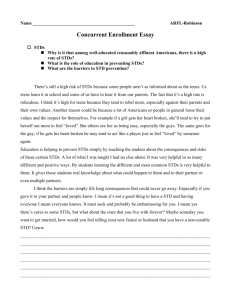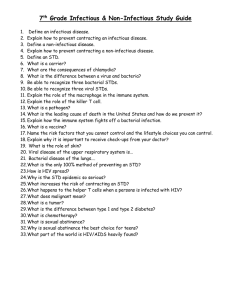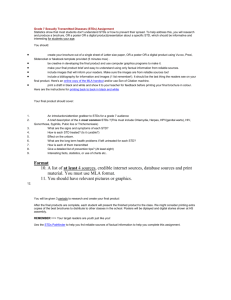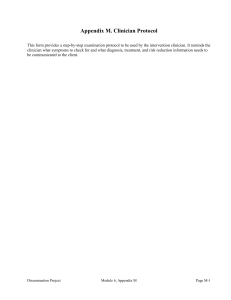Description of Unit - shanyncosmeportfolio
advertisement
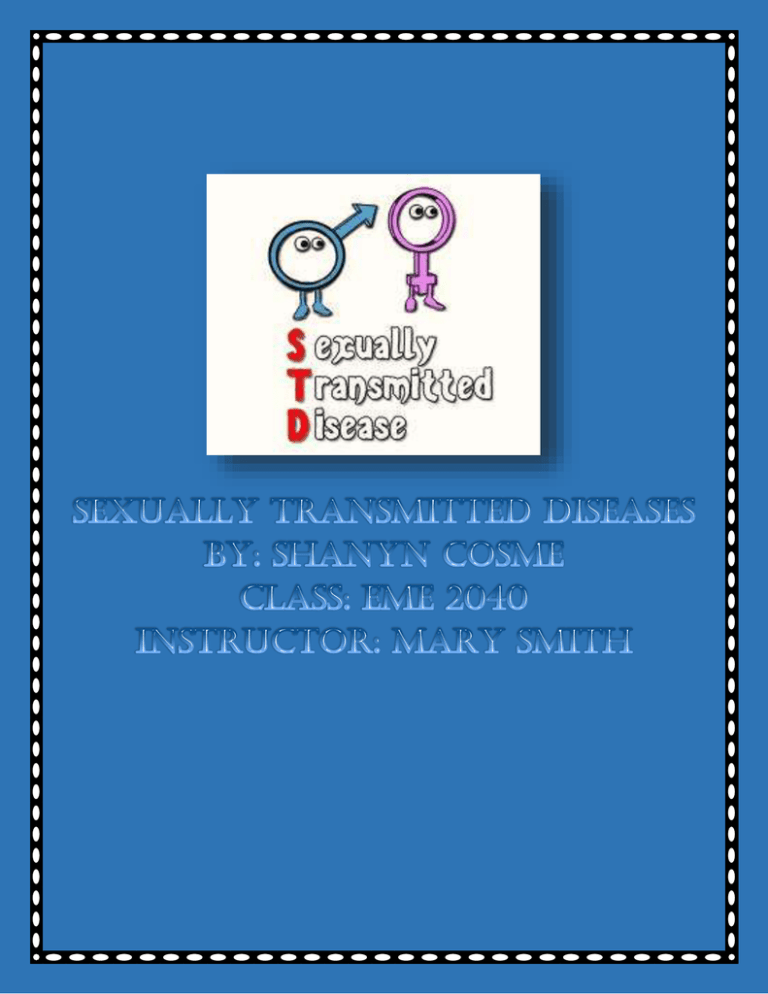
2 Table of Contents Project summary .......................................................................................................................................... 3 Driving Question:................................................................................................................................ 3 Supporting questions: ..................................................................................................................... 3 Description of Unit: ................................................................................................................................... 3 Higher Level Thinking: ................................................................................................................... 4 Relevance: .................................................................................................................................................. 4 Technology Integration: ........................................................................................................... 4 Culminating Event: ........................................................................................................................... 4 Standards: ........................................................................................................................................................... 6 Common Core Standards: ............................................................................................................ 6 Next Gen Florida Sunshine State Standards: ............................................................. 7 NETs Standards:..................................................................................................................................... 8 Resources and Technology Needed: ................................................................................... 9 Formative Assessment Plan: ................................................................................................................. 9 Summative Assessment: ............................................................................................................................. 15 Rubric Link .............................................................................................................................................. 15 Introductory PowerPoint: .............................................................................................................. 16 Research Process Lesson: ....................................................................................................................... 16 Content lessons: ...........................................................................................................................................17 Content lesson 1:................................................................................................................................. 17 Content lesson 2: ............................................................................................................................... 18 Content lesson 3: ................................................................................................................................19 Culminating Event: ................................................................................................................................. 20 4/1/2014 3 Universal Design and English as a Second Language accommodation plan...........................................................................................................................................................................21 Ways of presenting information to students: ........................................................ 21 Ways students will be engaging and interacting with the information........................................................................................................................................... 21 Ways in which students can express themselves ................................................... 21 Forms of assessments ....................................................................................................................... 22 Students with hearing impairments................................................................................ 22 Students with visual impairments .................................................................................... 22 Students with a learning disability in reading .................................................. 23 Students whom English is a second language ....................................................... 23 Project summary Driving Question: What are STDs? Supporting questions: Where did STDs originate? How are STDs preventable? How can you catch an STD? Description of Unit: The students will learn where STDs first originated. They will see how from the past to present the severity has changed. I will show them how people are affected by STDs. They will learn how to avoid 4/1/2014 4 catching STDs. By viewing videos, pictures, and statistics related to STDs, the students will be able to identify STD cells and know what precautions to take in order to avoid them. When the lesson is over, I plan on having my students understand the history, the dangers, and the preventions of STDs. Higher Level Thinking: There are many STDs we are going to discuss. They will be opened to a whole new mind set when it comes to sexual relations and their bodies. I will have them thinking about future adult encounters and understand why it is important to make responsible, adult decisions. Relevance: Nowadays, young adults are having sex at younger ages. My students are eighth graders and the thought of high school can make them think about sex. They need to know what can happen if they have irresponsible sex with people they either don’t know are clean, or people they don’t know at all. Technology Integration: I plan to have the students in groups of 4-5 all researching a different STD together, then coming up with a presentation for the rest of the class. The students will be given time during school hours to work with their group members on classroom laptops and/or library computers. The students will be required to present a PowerPoint on the STD, with a video on the STD, and an in depth research report. Culminating Event: The students will present all their research they did on their groups’ std. they will all be able to inform each other on the 4/1/2014 5 different STDs, causes, symptom, and recovery methods through their class presentation. 4/1/2014 6 Standards: Common Core Standards: CCSS.ELA-Literacy.RI.8.7 Evaluate the advantages and disadvantages of using different mediums (e.g., print or digital text, video, multimedia) to present a particular topic or idea CCSS.ELA- Cite specific textual evidence to support analysis Literacy.RST.6-8.1 of science and technical texts. CCSS.ELA- Determine the central ideas or conclusions of a Literacy.RST.6-8.2 text; provide an accurate summary of the text distinct from prior knowledge or opinions. CCSS.ELA- Analyze the purpose of information presented in Literacy.SL.8.2 . diverse media and formats (e.g., visually, quantitatively, orally) and evaluate the motives (e.g., social, commercial, political) behind its presentation CCSS.ELA- Integrate multimedia and visual displays into Literacy.SL.8.5 presentations to clarify information, strengthen claims and evidence, and add interest. 4/1/2014 7 CCSS.ELA- Present claims and findings, emphasizing salient Literacy.SL.8.4 points in a focused, coherent manner with relevant evidence, sound valid reasoning, and well-chosen details; use appropriate eye contact, adequate volume, and clear pronunciation. Next Gen Florida Sunshine State Standards: HE.8.C.1.1 Analyze the relationship between healthy behaviors and personal health. HE.8.C.1.2 Analyze the interrelationship between healthy behaviors and the dimensions of health: physical, mental/emotional, social, and intellectual. HE.8.C.1.4 Explore how heredity and family history can affect personal health. HE.8.C.1.8 Identify major chronic diseases that impact human body systems. HE.8.C.1.6 Analyze how appropriate health care can promote personal health. HE.8.C.1.7 Anticipate the likelihood of injury or illness if engaging in unhealthy/risky behaviors. LA.8.5.2.4 The student will research, organize, and effectively deliver speeches to entertain, inform, and persuade; 4/1/2014 8 LA.8.5.2.5 The student will demonstrate language choices, body language, eye contact, gestures, and appropriate use of graphics and available technology. LA.8.6.2.1 The student will select a topic and develop a search plan with multiple research strategies, and apply evaluative criteria (e.g., scope and depth of content, authority, reputation of author/publisher, objectivity, freedom from bias) to assess appropriateness of resources LA.8.6.4.1 The student will use appropriate available technologies to enhance communication and achieve a purpose (e.g., video, digital technology) LA.8.6.4.2 The student will evaluate and apply digital tools (e.g., word, processing, multimedia authoring, web tools, and graphic organizers) to publications and presentations. NETs Standards: 1. Students demonstrate creative thinking, construct knowledge, and develop innovative products and processes using technology. (a, b, c) 2. Students use digital media and environments to communicate and work collaboratively, including at a distance, to support individual learning and contribute to the learning of others. (a, b, d) 3. Students use digital media and environments to communicate and work collaboratively, including at a distance, to support individual learning and contribute to the learning of others. (b, c) 4/1/2014 9 4. Students use critical thinking skills to plan and conduct research, manage projects, solve problems, and make informed decisions using appropriate digital tools and resources. (b, d) 6. Students demonstrate a sound understanding of technology concepts, systems, and operations. (a, b, d) Resources and Technology Needed: Materials: Notebooks, index cards, writing utensils, library books Technology required: Laptops/tablets, PowerPoint Internet Resources: www.cdc.gov/std is a website I will use to introduce the STDs to the students. They will then from there begin their own research and find their own resources about the STD they are assigned. Formative Assessment Plan: Lesson Standard Lesson Content Formative Objective Summary Assessment Strategy 4/1/2014 10 Introductio Next gen: Students The class Individually n to Unit: HE.8.C.1.8 will learn will be , each Creative what STDs divided student will Problem are. into groups make their of 5-6 own KWL They will be students in chart on introduced each. Microsoft to the final Together Word for me presentatio they will to grade n and come up and give understand with a KWL back for what will chart and them to keep be expected each group track of of them. will present their Solving one point progress. from each section of their charts. Research Common Students Each Groups for Process Core: will learn student the final how to will be on a presentation research laptop will be while I am finalized internet. on a this lesson. CCSS.ELA- They will computer Each group Literacy.RST.6 learn how that is will be -8.1 to use projected assigned the search to the STD they CCSS.ELA- Literacy.RI.8.7 using the 4/1/2014 11 CCSS.ELA- engines, front will be Literacy.RST.6 what board. I researching -8.2 websites are will have about. With appropriate them their CCSS.ELA- and how to follow groups, Literacy.SL.8.2 determine if with me students the website what I do will find at is reliable. so when least 5 they are on websites CCSS.ELALiteracy.SL.8.5 Next gen: Students their own they plan LA.8.6.4.1 will learn they will on using for LA.8.6.2.1 how to know how their final make a to do their presentation NETs: PowerPoint research. . I will then 6 presentatio have them n. turn it in, I will check Students each and will learn give them how to do approvals basic incite on their citations. website choices. They are to submit via email their first slide including: Group 4/1/2014 12 member’s names, due date, their STD and a picture. Content Next gen: Students Students Students Lesson 1 HE.8.C.1.4 will learn will be in will work where STDs their on their on originate. groups their next They will finding few slides. learn if it informatio They need a can be n about the slide and passed down history of picture for or only their STD. each transmitted They will be requirement. . expected to (Who find out discovered, who how it was discovered discovered, it, how it and the was severity of discovered, the disease). and what They will part of the send it to me body it via email affects. for 4/1/2014 13 constructiv e feedback and participatio n grade. Content Next gen: Students Students The slide Lesson 2 HE.8.C.1.7 will learn will be in making will different their continue. ways to get groups and They are to an STD. They finding the have slides will learn statistics of on the ways how STDs people with to get STDs are more STDs in and the common America. statistics of nowadays They will people than they find how infected and used to be. to get an who can STD. They become will infected. determine For the homework, likelihood individually of being , they are to infected find with a somebody disease at famous with one point an STD and of their bring them life. in to add to their 4/1/2014 14 PowerPoint the following lesson. Content Common Students Students They will be Lesson 3 core: will learn are to finishing CCSS.ELA- that there research their slide Literacy.SL.8.4 are ways to with their show. The Next gen: prevent group ways final slides HE.8.C.1.1 yourself to prevent will include HE.8.C.1.2 from STDs. They preventions, HE.8.C.1.6 getting an will vaccines, LA.8.6.4.2 STD. research and cures of and find their STDs. (if out if there no cure are then what vaccines they can do available to stay to avoid healthy). the STD. They are to They are to add any find out if final their STD is touches to curable. make it presentable and then submit it me. I will then assign them 4/1/2014 15 presentation s days. As an additional grade besides the PowerPoint, they are to do a final reflection and update their KWL charts. Summative Assessment: At the end of this lesson, the students in groups of 5-6 will have completed a PowerPoint on an assigned STD. The students are to construct a 15-20 minute lesson to the class about their STD. It should include the STD, the history, how to catch it, how to prevent catching it, if it is curable, if it has any vaccines, and how it can affect your life span. Students will include pictures, videos, and anything else they think is essential to teaching the class about their STD. Students are also to complete a final reflection about the STD lesson after everyone has presented, stating what they have learned and how they feel about knowing about the diseases. Rubric Link: http:/ /www.rcampus.com/rubricshowc.cfm?code=AC4WW7&sp=yes 4/1/2014 16 Introductory PowerPoint: Sexually Transmitted Diseases Ms. Cosme’s 8th Grade Science Class Research Process Lesson: Getting Started! The research process! 4/1/2014 17 Content lessons: Content lesson 1: Standard: Next gen: HE.8.C.1.4 Introduction: in order to grab the student’s attention, i will begin with them viewing a funny picture. it reads: “cooties do exist, except when you grow up they’re called stds”. this will give them a little giggle, then I will proceed on to the origination of STDs. This lesson is to get the students to understand where STDs came from and whether they are only transmittable or if they can be passed down from other generations. The point of this lesson is to give them some history on their STD. It shows how far along we have come and how much more we now know. This is important because it consumes the first portion of their final project. Learning experience: I will be projecting on the front board a general synopsis about STDs for the students to watch. I will show them basic videos and have them all find ONE on their STD to show the class. I have a guest speak who has an STD and his/her partner. I will have them explain to the students to difficulty of dealing with the STD and their story on how they got the STD, how they found out, if both have it, and have them answer any questions the students have for them. The students will take notes on the speakers and are to incorporate some points into their presentations. Conclusion: The students are to be adding content to their PowerPoints as they find the information they are required to have. They are to have at least four slides with pictures that they are to send to me. I will be responding with approval and/or any improvements they need to do. They will be getting a participation grade. They will also be given vocabulary that they are to know for their final test at the end of the unit. 4/1/2014 18 Content lesson 2: Standard: Next gen: HE.8.C.1.7 Introduction: In the beginning of this lesson, each student will be given a sheet of paper with a circle on it. They are to make their own pie graph and break down the United States in to what percent has an STD, knows they have one, have one but do not know, and those who do not have at all. Then when they are finished with their graphs, i will show them the real statistics. i’m expecting the results of theirs versus mine to be a drastic difference. The objective of this lesson is for students to see how many people are affected by STDs. They will be opened to the reality and dangers of STDs. This is important to the unit because they have to understand the dangers of STDs and be able to present them in their presentations. Within this, they will also find the different ways to get an STD. Students will see how there are more than just one way to get or give a receive. Learning experience: students will watch a “ted talk” on stds. they will be viewing several videos on the statistics and comparing and contrasting the past to the present. The students are to be in their groups and to find specific videos on their STD with statistics to provide in their final presentation. The students will all be on laptops provided from the schools laptop carts. Each of the groups are to find three videos on their STD with supporting statistics. Conclusion: All information found through the videos and the Ted Talk are to be placed on slides for their final presentation. Students will need to find videos that are presentable to add at least one to 4/1/2014 19 their PowerPoint. For homework, each member of each group is to find a famous person that has an STD. They are to name the person, the STD, length of having it, and if they have any partners or children. This also will be included in their PowerPoints. Content lesson 3: Common core: CCSS.ELA-Literacy.SL.8.4 Next gen: HE.8.C.1.1, HE.8.C.1.2, HE.8.C.1.6, LA.8.6.4. Introduction: To open this lesson, I will show them a video of a little animated penis. He is trying to get in everyone, but all the girls push him away because he isn’t protected. then he runs into one girl who puts a condom on him and then everyone wants him. It will show them that something protected is more wanted and then we will have a discussion pertaining to the last lesson. With that conversation, I will lead them into the lesson on how to prevent STDs. This lesson will be the final lesson, and they will be learning ways to prevent these STDs. The goal of this lesson is to teach them that STDs are preventable. They will learn that it is as easily transmitted as it is preventable. They will also be looking for treatments if an STD is caught. Learning experience: I will be displaying my computer screen to the front of the room and showing them videos from YouTube on STDs and teens. About 4-6 videos will be shown and then they we will have another discussion on what they have learned so far. On readwritething.org, as a class we will be making a KWL chart. They will all give me points to put under each column. Groups will then breakout and finalize their PowerPoints. Conclusion: After this lesson, the groups will have the rest of the period to finish their PowerPoints with their group. They are to have all required content including: history, statistics, pictures, videos, causes, ways to be prevented, and treatments. Students will be 4/1/2014 20 expected to have everything done and turned in by the end of the day. Their last assignment is to make a personal KWL chart and turn it in to me. Presentation days will be assigned when their PowerPoint is turned it. Culminating Event: At the end of this lesson, my students are to have completed a PowerPoint. Each group will be responsible for teaching the class about their STD. Their PowerPoints and presentation will be graded by me, and the class. The presentations will be the given the Friday of 4/1/2014 21 the week the unit is completed. The only audience will be myself and the rest of the class and it will be presented in my classroom. After each group has gone, there will be a quiz on all the STDs to evaluate what they have learned from each group. When each group is finished, we will all stand up together, do a big sigh of relief together, and then have a little refreshments for their completion. As they are relaxing, I will announce their names and have them come to the front, bow, and take their certificates. Universal Design and English as a Second Language accommodation plan Ways of presenting information to students: There are many ways to present information to students. Digital media is the best way to assist students who may have learning disabilities. There are interactive white boards, interactive audiobooks with built in dictionaries and text-to-speech software, and personal vod/podcasts available online. Ways students will be engaging and interacting with the information Students can take notes via a tablet and use a stylus that can take their handwritten words and translate it to a typed text. Students are able to collaborate together and create ideas online that they can publish to an online tool, where I is able to manage and grade what they are doing, Students can also work independently and receive feedback from me electronically. Ways in which students can express themselves students can use word prediction software’s. they can also use speech-to-text software’s and enhanced keyboards. Both ways 4/1/2014 22 provide ways for a student to write something out. Whether for an assignment or just what is on their mind. Students can also make vodcasts or podcasts. Forms of assessments General test that apply to students without a disability is obviously inappropriate for students with learning disabilities. Therefore, there are alternatives that needed to be taken into consideration. For obvious reasons, not all students can take handwritten tests or visual tests. For students that are not able to read well, see well, or hear well will get a different form of the test. For example, hearing impaired can do a visual test, visually impaired and reading impaired can do a test though listening to the questions and recording their responses. Students with hearing impairments An assistive technology tool I can use to assist students who are hearing impaired is screen reading software. Because the student cannot hear well, or at all, being able to have the words being shown on the screen makes things easier for them rather than trying to read lips. This allows the students to navigate themselves through the software with their mouse, such as it being a tour guide for them. Most videos include the option for closed captioning allowing the student to read what is going on. Students with visual impairments Students who have visual impairments need more audio related assistance. Text reading software is the best assistive technology for students with this disability. The students are able to hear text that is written out loud by a computer. This allows for the students to get as much information as they need. Instead of having to pay close 4/1/2014 23 attention to me teaching, they are able to hear it at their own pace, their own sound level, and as many times as they need. A useful tool is VoiceOver. This tool lets any text be heard aloud. Students with a learning disability in reading Students with a learning disability in reading can use electronic storybooks. This software combines words, pictures, sounds, and voices. Students can watch the story unravel as they hear what is happening. The software provides options for how it is read to them. It allows them to have notes pointed out to them as far as important materials. The software increases their comprehension skills and it increases their vocabulary. Students whom English is a second language JAWS is a very helpful tool for translating texts to students. This is a screen reader that is compatible with Windows machines and it is available in multiple languages such as English, Spanish, French, German, Portuguese, and Italian. Electronic Prizmo is also an app that is available to read the screen for the student, and in over 10 languages. Pages from stories can be scanned into the app and translated into a different language for students to better understand. 4/1/2014
